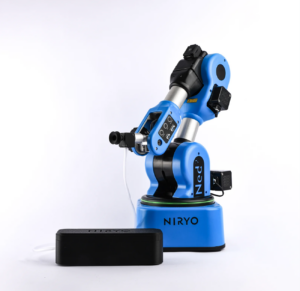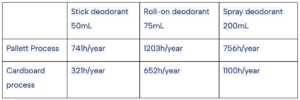The packaging field is ranked within the top 10 French industrial fields. If France produces so much packaging, that is mainly because most products need to be packed before being used by consumers.
In the Fast Moving Consumer Goods field, you can retrieve three different packaging phases:
- Primary packaging
- Secondary packaging
- Contract packing (also called co-packing)
Primary packaging
The primary packaging consists in conditioning naked products during the manufacturing phase, such as, chicken breasts packaged in sealed trays, or shampoo in bottles.
This phase aims to protect the product from its environment, by conferring it, most of the time, a longer conservation period.
Secondary packaging
Once the naked products are packaged, it is, most of the time, necessary to pack them in packaging suitable for transport.
Products can be packaged in multiple ways:
- In cardboard boxes: cardboards boxes with flaps (also called “American crates”), cardboards boxes without flaps, trays, cardboard boxes ready for sale… Most of the time, cardboard boxes are palletized.
- In display or in-store packaging: it is a promotional rack found in stores. Those in-store packaging can be made of a standard pallet.
- On pallets: with dividers between each layer of product.
Content packing (or co-packing)
In the Fast Moving Consumer Goods field, products can be sold individually, in promotional packs, kits or sets.
These high added value packaging operations are made, at the end of the process, by industrials, logistical subcontractors or support and work assistants establishments.
These packaging steps being repetitive, an increasing number of industrials move towards automation or robotisation. The automation of these missions allows workers to accomplish high added-value tasks, more complex, needing human interaction.
Any packaging automation needs? Here are some helpful tips:
- Define your needs (musculoskeletal injuries, return on investment, agility, higher rate, reducing of the working force dependence, standardization…)
It is absolutely necessary to define an automation project’s expectations. Indeed, the return on investment being, most of the time, the first decision-making lever, many other elements need to be taken into account.
Among them, making some difficult work stations less harsh (musculoskeletal injuries, work-related accidents, …) is extremely important for the return on investment. Indeed, according to the French global health insurance, in the industrial field, 12,6% of the workers get a sick leave because of musculoskeletal disorders, once a year. A backache causes, on average, 2 months of work stoppage.
- Create a mapping of the processed references and used processes
Some packing lines deal with different types of references or allow the packing of products in different ways. These various manufacturing processes need a certain flexibility of the manufacturing tools and, thus, of the automation solutions.
To do so, it is necessary to take into account each reference and process to find solutions that might fit the different needs.
- Calculate the opening time for each process
To know the profitability of an automation project, it is necessary to calculate the line opening time of each industrial process.
For instance:
Line 5 allows to pack three different deodorant lots thanks to two processes. The aim is to determine the opening time for each process and each reference:
- Calculate the current packing rate
A last element is necessary to determine the kind of solution you need to implement: the arrival rate of the product to pack.
A line with an arrival rate up to 200 products/minute won’t allow you to use the same solutions as a line with an arrival rate up to 35 products/minute. Indeed, a SCARA or a DELTA robot with a high speed would be much more suitable for a high arrival rate, and collaborative robots would better fit slower rates. Cobots also present the advantage to be less invasive on production lines.














